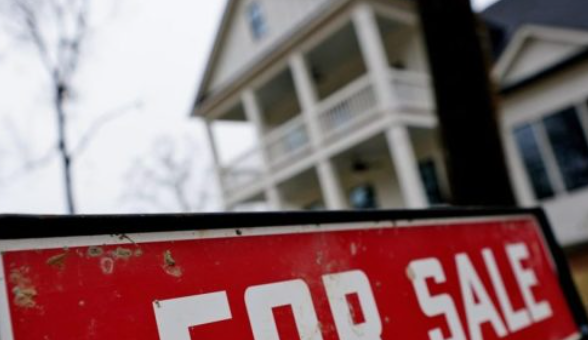- Affordability Challenges: The middle class is finding it harder to afford homes as the cost of homeownership continues to rise. In many areas, a household making $100,000 can afford only about 38.6% of the homes currently on the market. Mortgage rates are nearing 7% for 30-year fixed loans, which significantly increases monthly payments, making homeownership more difficult for middle-income families. In 2018, there were around 810,000 homes that middle-income buyers could afford; by 2024, this number had dropped to just 263,000 homes available in April of that year (Realtor.com).
- High Down Payments Required: A household making the median income would need to put down about $127,750 (35.4% of the home price) on a typical U.S. home, valued at approximately $360,000, to ensure that mortgage payments do not exceed 30% of their monthly income. This down payment requirement has increased significantly due to rising home prices and mortgage rates (Zillow).
A new survey reveals that only 10% of Americans believe homeownership is easy to achieve, even though 89% see owning a home as essential or important to their future aspirations. This data, derived from a Wall Street Journal/NORC poll conducted in July, highlights a significant gap between the desires and expectations of U.S. adults on various long-term economic issues, including financial security and a comfortable retirement, which are also viewed as important but challenging to attain.
The survey reflects a shift in sentiment over the years. Twelve years ago, a poll by the Public Religion Research Institute found that more than half of Americans believed the “American dream” was still attainable. Today, that optimism has waned, with only about a third of respondents in the recent survey expressing the belief that the American dream is achievable. Economists suggest this pessimism is justified, pointing to younger generations being increasingly priced out of homeownership and burdened with student debt.
Regional Variations in Affordability: Some metro areas remain more affordable for middle-class buyers, such as Youngstown, Ohio, where a household income of just over $40,000 is sufficient to qualify for a typical home. In contrast, areas like San Jose, California, are extremely expensive, requiring a household income of over $425,000 to afford a typical home. In more affordable regions, like parts of the Rust Belt and Deep South, a higher proportion of homes remain accessible to middle-income buyers (The MortgagePoint).
The findings show a broad consensus across gender and political affiliations: Americans are facing a stark reality where their hopes for the future do not align with what they consider realistic. This growing disparity is seen as a reflection of the economic challenges that many are grappling with today.
Just 10 percent of Americans in a new survey say homeownership is easy to achieve, even as 89 percent see owning a home as essential or important to their vision of the future.https://t.co/SBXJoCw4eJ
— WVNS 59News (@WVNS59News) August 29, 2024
In response to the increasing difficulty of achieving homeownership, Vice President Kamala Harris’s campaign has focused on addressing this issue. The campaign has proposed strategies to provide more opportunities for young Americans to own homes. Among the measures outlined are efforts to crack down on corporate landlords who buy up housing and rent it out at high prices, as well as plans to build three million new housing units. Additionally, Harris has proposed offering tax incentives to homebuilders who sell properties to first-time buyers.
The Wall Street Journal/NORC survey, conducted from June 26 to July 8 among 1,502 adults, has a margin of error of 3.3 percentage points. The results underscore a significant shift in the economic landscape, where aspirations for financial security and homeownership are increasingly seen as difficult to achieve.
More
- Impact on First-Time Buyers: First-time buyers, particularly those without substantial savings or family financial support, face significant hurdles due to higher home prices and interest rates. They are competing against all-cash offers from investors and those relocating from more expensive areas with substantial equity. The financial strain is even more pronounced for those with student loans or other debts (Realtor.com).
- Government and Market Responses: Some initiatives, like down payment assistance programs, are available to help middle-class buyers enter the market. These programs can provide significant financial support, reducing the amount needed upfront and making homeownership more attainable. However, awareness and access to these programs are often limited (Zillow).
Key Points:
i. Only 10% of Americans believe homeownership is easy, while 89% consider it essential or important for their future.
ii. A recent survey shows a decline in optimism about achieving the American dream, with only a third now believing it’s attainable.
iii. Economic challenges such as rising home prices and student debt are major barriers for younger generations.
iv. Vice President Harris’s campaign proposes measures to increase homeownership opportunities, including building more housing and regulating corporate landlords.
v. The survey reflects a broad gap between Americans’ aspirations and what they feel is realistically achievable.
Conner T – Reprinted with permission of Whatfinger News

